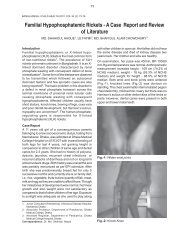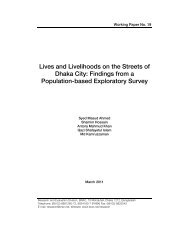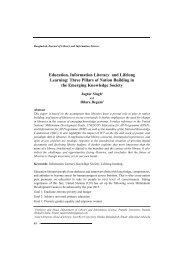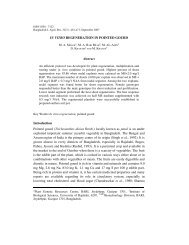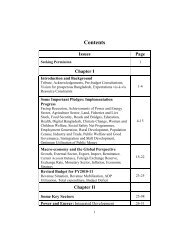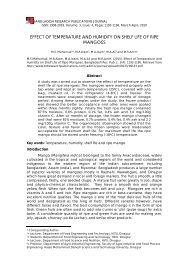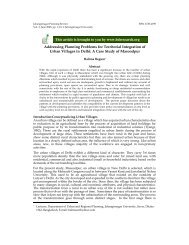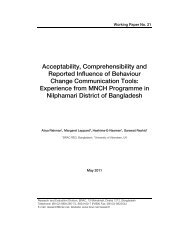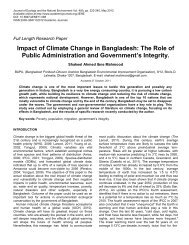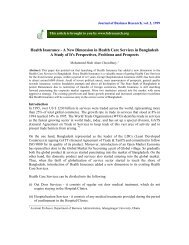Economic Value Added _Formated_.pdf
Economic Value Added _Formated_.pdf
Economic Value Added _Formated_.pdf
Create successful ePaper yourself
Turn your PDF publications into a flip-book with our unique Google optimized e-Paper software.
Jahur & Riyadh:<strong>Economic</strong> <strong>Value</strong> <strong>Added</strong> as a Management Tool 49<br />
3. <strong>Economic</strong> <strong>Value</strong> <strong>Added</strong> - The concept<br />
EVA is a term developed and used by a US based consulting firm named<br />
Stren Stewart & Co. This measure is its registered trademark 1 . It has<br />
done much to popularize and implement this measure of residual income.<br />
But the concept of residual income has been around for some time2 and<br />
many companies that are not Srern-Stewart clients use this concept to<br />
measure and reward manager’s performance (Brealey and Myers 2000).<br />
EVA is a measure to assess the extent to which companies have<br />
succeeded in achieving the objective of enhancing shareholders' wealth. (<br />
Brewer et al.1999). Conceptually simple, EVA is a method of<br />
ascertaining whether and to what extent a company has been able to<br />
enhance shareholder value at the end of a particular year. A firm creates<br />
value only if it can generate return higher than its cost of capital. Cost of<br />
capital is the weighted average cost of capital. The rationale of EVA is<br />
that shareholders have an expectation about what to expect from the<br />
company at the initial period. This is based on well-known principles of<br />
calculation of equity cost of capital which is given by a company.<br />
However, EVA measures what shareholders get over and above cost of<br />
equity capital.<br />
4. Computation of <strong>Economic</strong> <strong>Value</strong> <strong>Added</strong> (EVA):<br />
There are three methods of computing EVA or for judging whether<br />
management of the company has increased shareholder value.<br />
Method I<br />
Under this method, EVA is computed based on net return on investment.<br />
In this method, the EVA is calculated by multiplying spread between return on<br />
investment (ROI) and weighted average cost of capital with capital employed.<br />
i.e. EVA = (ROI – Weighted Average Cost of Capital) × Capital Employed<br />
1 For details please see G. Bennett Stewart, The quest for value, New York, Harper Collins,<br />
1991.<br />
2 EVA is conceptually the same as the residual income measure long advocate by some<br />
accounting scholars (See, for example, R. Anthoney “Accounting for the cost of equity”,<br />
Harvard Business Review, 51, 1973 pp.88-102).



